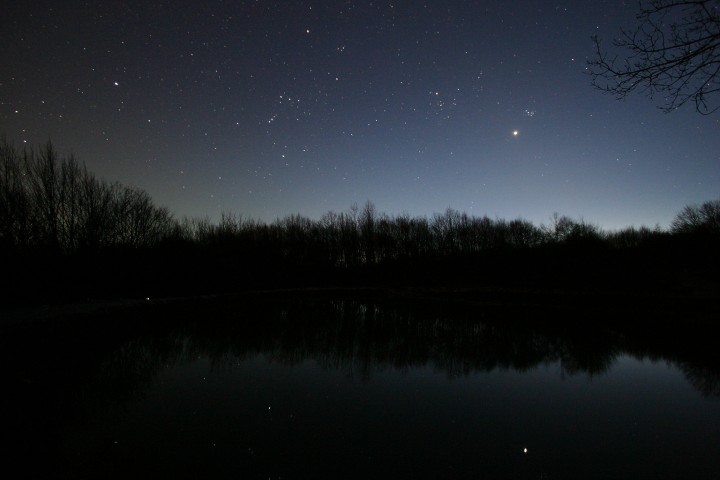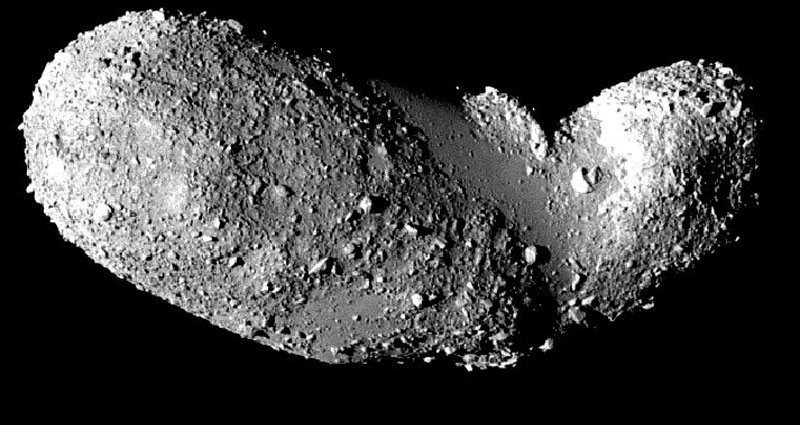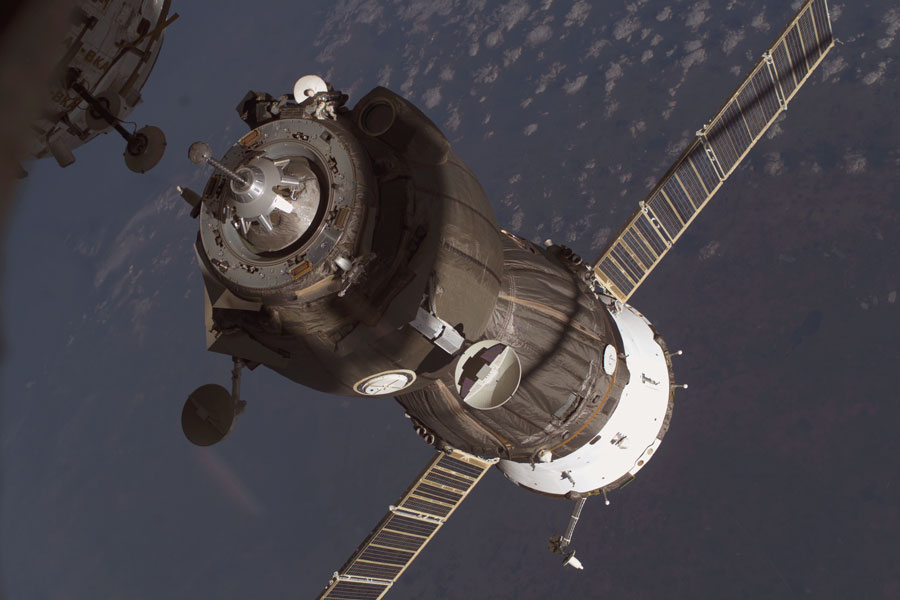 Scientists Revisit Mars Sample Return Plans
Scientists Revisit Mars Sample Return Plans
Space News Correspondent
posted: 9 May 2008
ET
ALBUQUERQUE, N.M. — International planning is under way to reinvigorate plans for a Mars sample return mission, with researchers assessing science priorities and strategies to maximize the scientific output from such an undertaking.
Over the last several years, an armada of orbital and surface missions has revealed Mars to be surprisingly more complex than once thought, imbued with a variety of distinct environments — each of value in terms of possible scientific payback given a sample return effort. Mars samples returned to state-of-the-art Earth laboratories are considered by many to be the only way to unravel a host of unresolved questions about the red planet. A sample return mission also is viewed by many as a key tool to help space agencies prepare for future human expeditions to Mars.
Mars scientists, space engineers and program planners met here April 21-23 to take part in "Ground Truth from Mars: Science Payoff from a Sample Return Mission." Discussions focused on what scientific data can be extracted from the return of Mars samples to Earth. Another major topic was the packaging, care and handling of martian materials that would be needed to ensure that the specimens offer great payoff for their potential to reveal past and present conditions on the red planet. The meeting was initiated by the Curation and Analysis Planning Team for Extraterrestrial Materials, a standing committee of scientists who advise NASA.
Surprises on Mars
While no nation or group of nations has committed to fund what is likely to be a multibillion-dollar Mars sample return program, scientists feel that groundwork is being laid now, albeit in piecemeal fashion. The work of Mars rovers Spirit and Opportunity, for example, has been scientifically stellar, said Doug Ming, a space scientist within the Astromaterials Research and Exploration Science Office at NASA's Johnson Space Center in Houston. "We were surprised when we got on the ground to see an enormous diversity of materials. It took us all by surprise," Ming said. The two robot geologists independently have been exploring Gusev Crater and Meridiani Planum for more than four years, yielding "an enormous wealth of information that can be fed forward into a Mars sample return mission," he said. Ming and other scientists at the meeting suggested that a Mars sample return involving either of the rover sites could be viewed as the first leg of a two-part mission to bring samples back to Earth.
Cache and carry
NASA's Mars Science Laboratory, which is scheduled to launch in 2009, carries a container for caching bits and pieces of select martian samples. The cache could be saved until it could be transported back to Earth as part of a future Mars sample return mission, said John Karcz of the SETI Institute and NASA's Ames Research Center in Mountain View, Calif. The large nuclear-powered Mars Science Laboratory rover is being designed to wheel across Mars for a full martian year, equal to nearly two Earth years. The cache device would be set up to contain from five to 10 or more samples, Karcz said, "if we have the time, resources and inclination during the traverse."
The samples would be held in a container designed to allow photo-documentation of the samples over the course of the Mars Science Laboratory mission. The hockey puck-sized cache container is designed for easy removal by a future Mars sample return rover, Karcz said, for subsequent transport back to Earth. Meanwhile, the powerful eyes of several spacecraft already in orbit around Mars — NASA's Mars Odyssey and the Mars Reconnaissance Orbiter, joined by Europe's Mars Express — are examining areas that show promise in the search for extinct or extant martian biology and studies of the planet's evolution.
NASA's Phoenix Mars lander, which is set to land May 25, was designed to study the history of water and the potential uses of the martian arctic's ice-rich soil to provide life support and other needs of future human crews that will explore the planet. In many ways, Mars researchers find themselves in a candy store of scientific sweet spots — several candidate sites that seem ideal for a Mars return sample mission.
For example, the high-powered zoom lens of the Mars Reconnaissance Orbiter was used to identify two possible ancient hydrothermal springs that might have been a cozy niche providing warm, liquid water to harbor martian life forms as the climate on the red planet became colder and drier, said Carlton Allen, the astromaterials curator and manager of the Astromaterials Acquisition and Curation Office at NASA's Johnson Space Center (JSC).Allen and Dorothy Oehler, a JSC research colleague, view these possible springs as an area of potentially great importance to astrobiology. "This may well be the type of site that would have high priority for sample return," Allen said. "If this is what we claim ... it may well be one of the most significant, best astrobiological sites on the planet."
Pricey and risky
There is no question that a Mars sample return mission will be a pricey and risky initiative and opinions at the meeting varied widely when it came time to discuss the best way to get the greatest scientific returns for the least money.
"We don't want to engineer the [heck] out of this and make it a $10 billion return mission. We'll never get samples back. Let's be realistic," said Clive Neal, a professor of civil engineering and geological sciences at the University of Notre Dame in Indiana."A Mars sample return will be much more costly than other Mars missions. That's not actually a thesis ... I think that's a given," said David Mittlefehldt of the Astromaterials Research Office. "Orbital study is getting increasingly sophisticated. Nevertheless, it doesn't reliably provide an accurate description of the geology of the surface. And that's really what you need in order to plan a Mars sample return mission," he said. "Therefore, I think we should go some place where wheels-on-the-ground provide that geologic context."
Intelligent decisions
An ambitious mission like Mars sample return needs a lot of push, a lot of energy, and it needs a lot of people explaining why it is important to do, said Carl Agee, a co-convener of the meeting and director of the Institute of Meteoritics at the University of New Mexico in Albuquerque. Agee told Space News that the time to get started on Mars sample return is now so we can "make intelligent decisions about where to go, rather than just landing blindly." A synergistic Mars program — one that does not pit sample return versus orbital mission versus on-site study — will "show how all of this fits together to plan the strategy for exploration," he said."I think that we're in danger of trying to over-achieve with our first sample collection and thereby shoot ourselves in the foot," said Derek Sears, director of the Arkansas Center for Space and Planetary Sciences and head of the Cosmochemistry Group at the University of Arkansas in Fayetteville.
The goal should be to get to Mars and obtain the simplest and most obvious rocks from a sensible place and get them back, Sears advised. "Don't worry if we upset the rocks a little bit on the way back. Just get them back. Get them in the lab and we'll figure it all out. Don't over-worry the problem because it'll kill you," he told Space News. A Mars sample return mission that gets under way as early as 2020 is of great interest to both NASA and the European Space Agency, said David Beaty, chief scientist of the Mars Exploration Directorate at the Jet Propulsion Laboratory in Pasadena, Calif., and also a co-convener of the meeting. There is a growing desire to create an international version of a Mars sample return mission, not only in the United States and Europe, but also in Japan and Canada, Beaty told Space News.
Beaty said there already is a task force, the International Mars Architecture for Return of Samples (IMARS), with representatives from more than a half-dozen countries, along with NASA, the European Space Agency, the Canadian Space Agency and the Japan Aerospace Exploration Agency."They are trying to develop a potential plan for Mars sample return that can be separately presented to the different countries to generate budget," Beaty said. "Ultimately, we need to have the same plan being presented in multiple places."
Note:
This reminds me of Sandkings:
From the series The Outer Limits.
The scientist Dr. Simon Kress (Beau Bridges) has been researching the development of a species using eggs found in a sample of Martian soil. When one bug escapes from the laboratory breaking the security of the facility, the project is shut-down by the government due to its hazard. Dr. Simon expected to win the Nobel Prize and steals 275 g of the sample ground, bringing it to the barn of his property and developing new species. He hides the truth from his wife Cathy (Helen Shaver) and shares the secret with his smart son Josh (Dylan Bridges). Along the days, Simon realizes how intelligent the creatures are and feels like a god since they seem to worship him. However, when Simon is bitten by a subject, he changes his irresponsible behavior to insanity, jeopardizing his family, his friend and mankind.
We're in the pipe , five by five.























